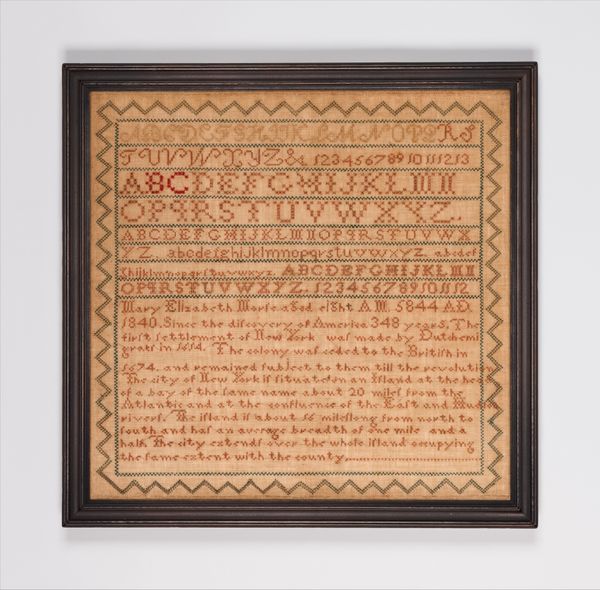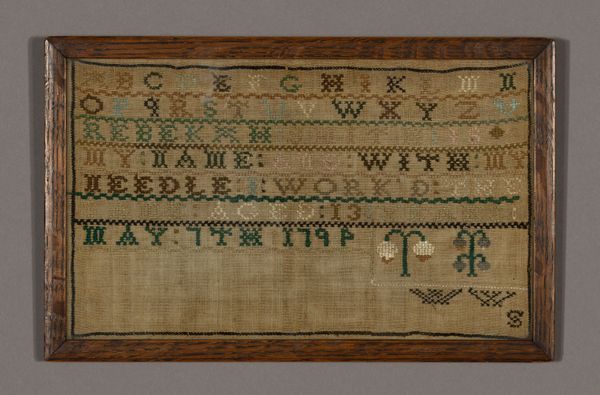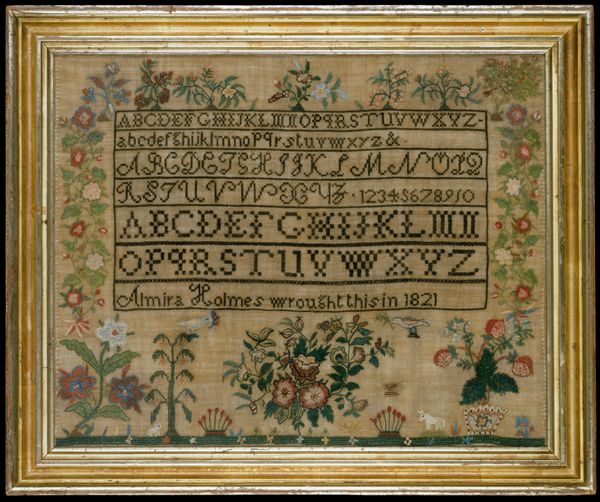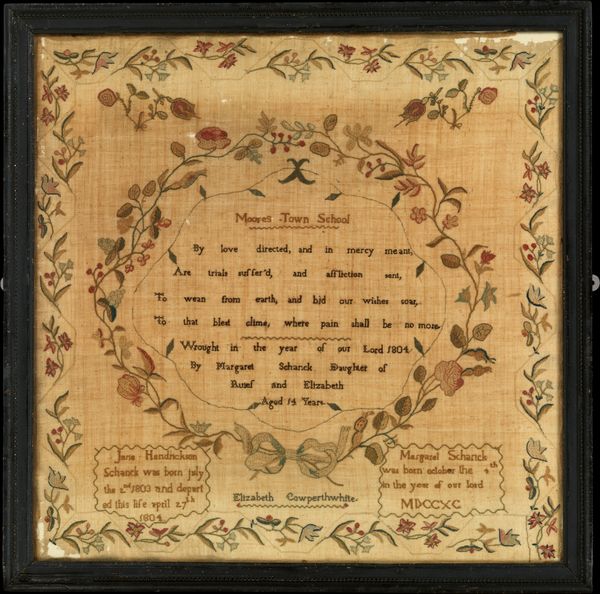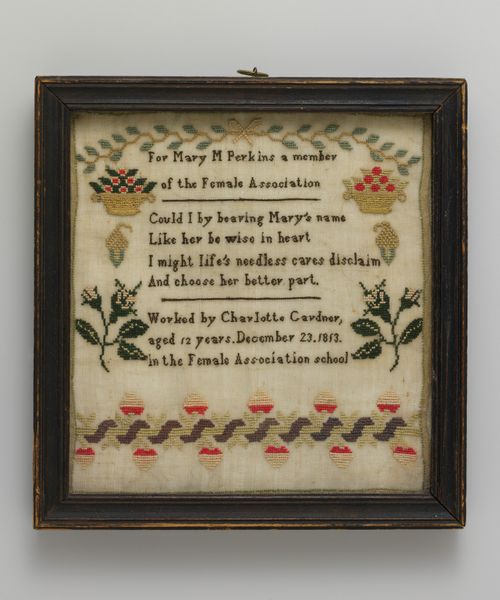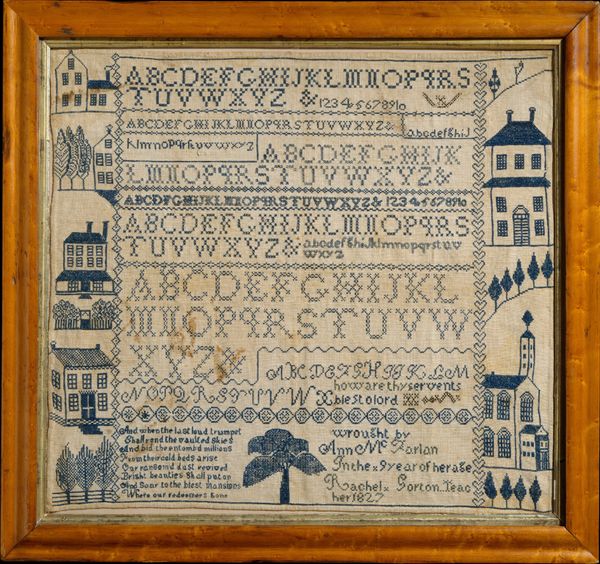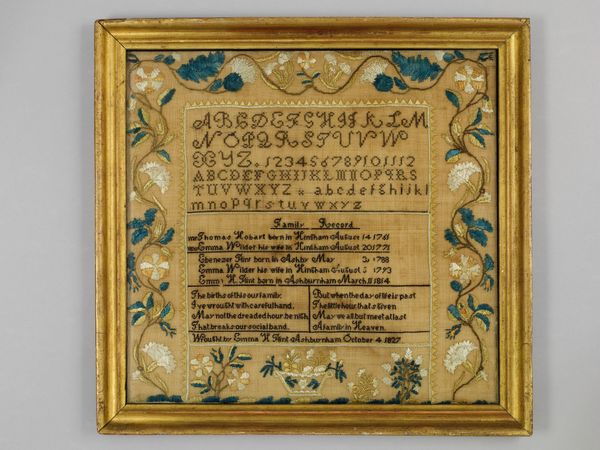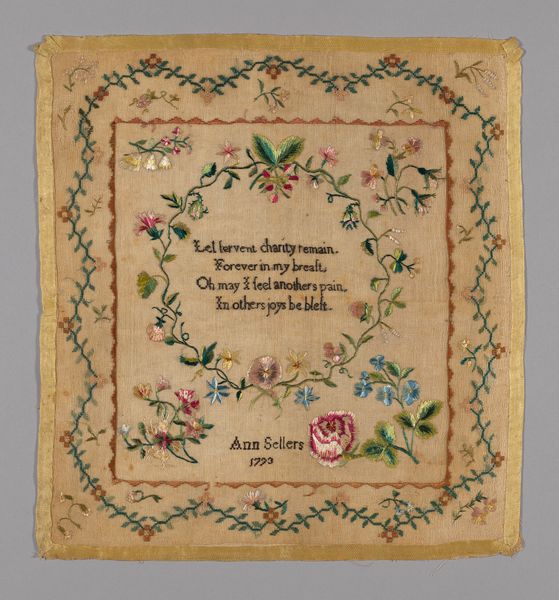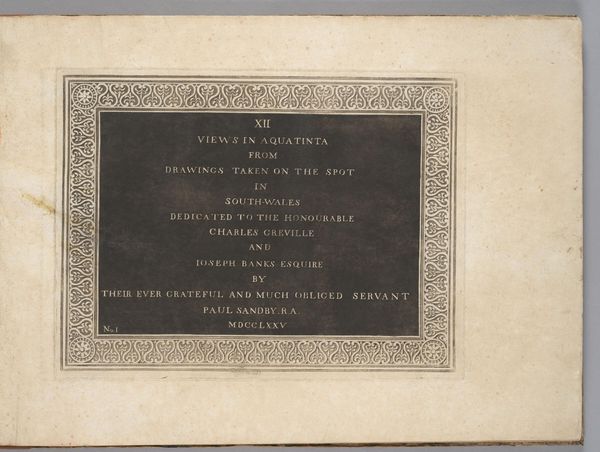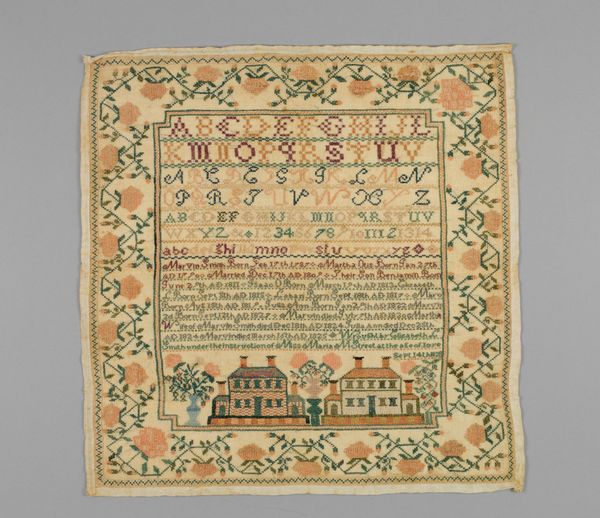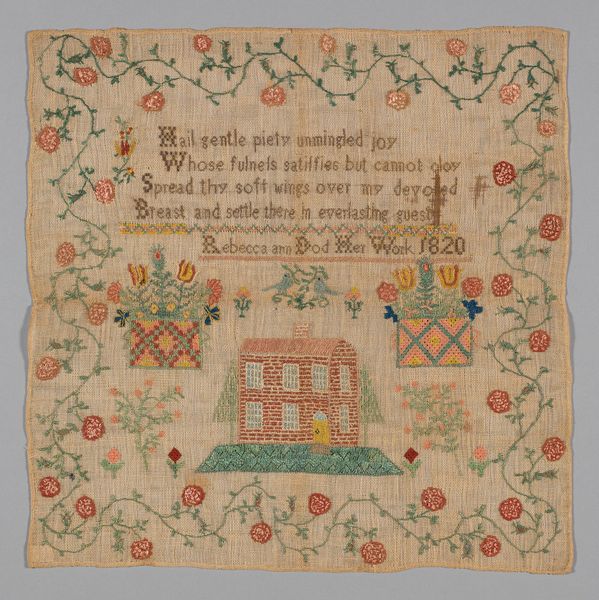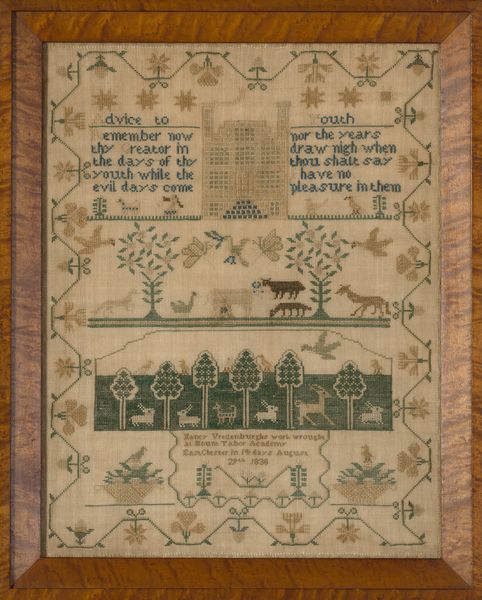
drawing, textile, paper
#
drawing
#
narrative-art
#
textile
#
paper
#
folk-art
#
academic-art
#
decorative-art
#
miniature
Dimensions: 19 1/2 × 17 1/4 in. (49.5 × 43.8 cm)
Copyright: Public Domain
Curator: This is Eliza Hodges Oliver's "Sampler," created in 1829. The piece is primarily textile and paper, and its small scale gives it an intimate feel. I find the act of stitching alphabets and verses onto fabric to be incredibly endearing, almost a meditation. What strikes you about this sampler? Editor: It’s quite charming. I’m drawn to the careful stitching of the alphabet and numbers, it's neat and yet slightly uneven, so personal. It is framed; were these types of embroideries common as decor in the 19th century? How would this piece have functioned within its original cultural context? Curator: Absolutely, samplers were quite common! They served as educational tools and demonstrations of skill, particularly for young women. They represented not just needlework proficiency, but also literacy, memory, and moral instruction. It reveals a lot about 19th-century expectations of women, doesn’t it? Oliver includes the date and her age, emphasizing the process of education. It’s not merely decorative, but a testament to the societal pressures and limited opportunities afforded to young women at the time. Do you think her choice of verse reinforces any aspects of that? Editor: I hadn’t considered it that deeply, I suppose. The verse referencing 'Jesus', ‘infante hand’ and writing ‘thyself upos her heart’ all definitely reflects on her cultural setting, a heavy emphasis on domesticity, religion, and education intertwined together. Thinking about it now, I can't imagine stitching such careful and neat rows myself! Curator: Exactly! It makes you wonder about her own aspirations versus what was expected of her. It offers an interesting glimpse into the dynamics of gender, labor, and education within that era. So much is stitched into the very fabric, isn't it? Editor: I agree; I’ll definitely look at samplers differently now, considering the hidden layers of social meaning.
Comments
No comments
Be the first to comment and join the conversation on the ultimate creative platform.
